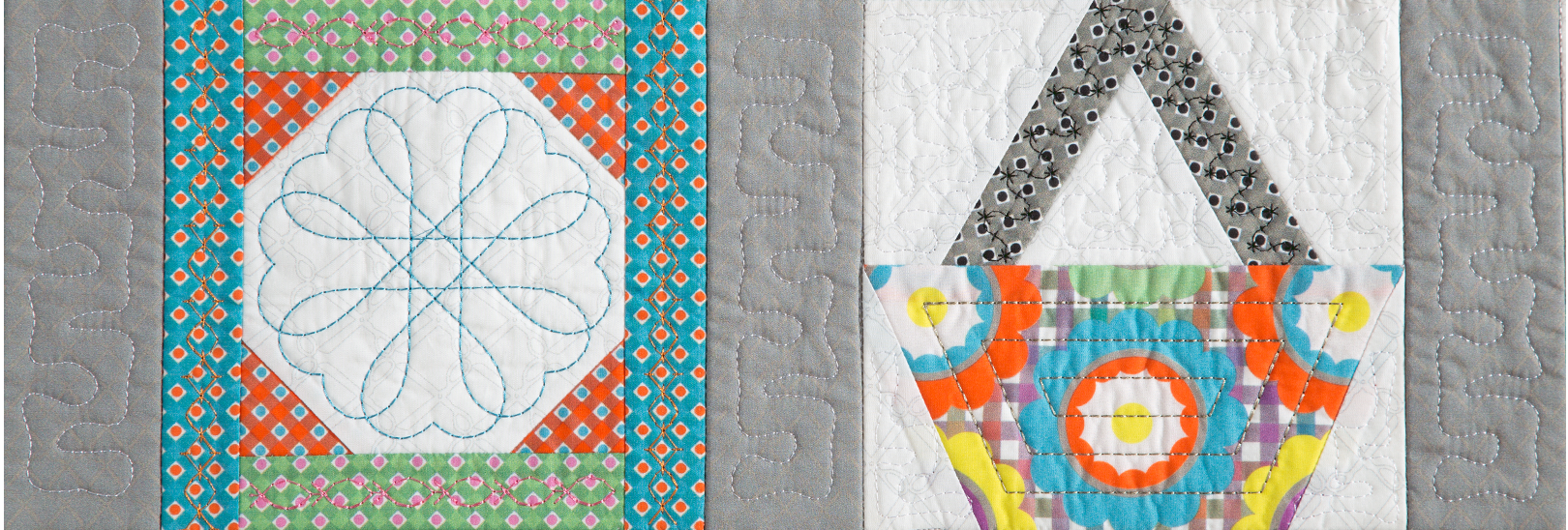Imperfect stitches happen, no matter how experienced you are. The more you stitch, the better you get. The more confidence you have, the more you trust your machine to produce professional results. Even so, not every project will be perfect. You can stitch the same design 30 times and 28 of them will be spot on, but two may not be up to snuff. Is it the end of the world? Of course not, but it does beg to answer a serious question, “To rip or not too rip?”
Some rip out EVERY misaligned stitch while others shrug and move on. Here’s the criteria I apply on making this call: How bad is it? Can it be easily corrected? Will the recipient even know if something is amiss?
How bad is it? On a scale of 1 to 5, is it glaringly noticeable? That’s a 5. Barely visible, that’s a 1.
Can it be easily corrected? On a scale of 1 to 5, will the removal of 20-30 stitches fix the problem? That’s a 1. A 5 is when you must start over as the project cannot be salvaged (and really that’s a 10!).
Will the recipient even know something is amiss? If yes, that’s a 5, you must fix it. If not at all, that’s a 1.
Recently, I stitched an applique name and everything started out smoothly. 
But as I advanced to color 3, the satin outline of the first letter, something must have hit the hoop and the outline didn’t cover the tackdown. Ugh! 
Immediately, I applied the 3 questions: How bad is it? It’s a 1 in my book because the tackdown and satin outline is the same color as the applique fabric and there’s a just a speck of background fabric peaking out.
Can it be easily corrected? Since I didn’t notice the problem until the satin outline was complete, it’s a 4. That’s a lot of satin stitches to remove. Plus, I was on a tight schedule so ‘easily corrected’ didn’t fit the time frame.
Will the recipient even know something was amiss? No, not this little angel. She’s only 5 and not an embroidery expert yet! If this was for a customer, then yes, by all means, rip it out.
End result? I removed the visible tackdown stitches, moved on and completed the project. 
How about you? What’s your criteria for removing stitches?





11 COMMENTS
J Curtis
7 years agoIf I can see it and it bugs me, I figure others can and I fix it.
Julie
7 years agoIf I can see it…it bothers me til it dont
Marti Morgan
7 years agoI work very hard at letting it go – I know that no one will see it but me, but heck, I sort the dirty silverware in the dish washer, who will win my OCD or my time.
Donna Fecteau
7 years agoI tend to be over critical of my own work (aren’t we all?) I like your scale and the idea of taking a few minutes to look at the project with its faults and just see if it is really not that bad. Sometimes I jump too quickly toward ripping things out and they weren’t that bad to begin with, or they could have been easily fixed without all the ripping!
Gail
7 years agoIf I were worried about the applique staying in place, I would consider doing a top stitch in all the letters to make it look like it was suppose to be that way. Would not be hard to do on the sewing machine.
Carolyn
7 years agoI’m a perfectionist, to a fault. If I can see them, they’re a 5 unless my husband can convince me otherwise.
Royce Zook
7 years agoI look at the issue similarly. If I can see it, all others can also. Can I remove the issue from view or must it be redone to insure it isn’t seen? Removal of the tack down stitches hardly qualifies as redoing but is an easy fix. When it is finished I wouldn’t consider it “moving on” but rather accomplishing a “fix” to remove the undesired miss. If it can only be “fixed” by totally re-stitching, I’d say MOVE ON when the replacement is completed and the miss-stitch is properly buried.
Sara Redner
7 years agoIf it’s for myself, maybe I’ll let it go. Ripping out doesn’t always work well, so I usually end up starting over – depends on what it is. FSL where all I’m losing is stabilizer and thread, definitely throw it away and start over. Clothing, either rip it out or cover it with applique.
Danie Duchesne
7 years agoI will start teaching embroidery And this is one lesson I want my student to learn: Don’t walk away ftom your machine, this is when things happen! If you are close by, you can notice the problem early on and make the correction before the worst happen. I am otherwise like you, if the recipient (or non embroiderer if the project is for myself) won’t notice, I don’t rip.
Karen Poole
7 years agoI have pretty much the same criteria! And like you, if it’s for a customer it will be corrected. But as a gift I look to see how bad or noticeable.
Jackie
7 years agoI used to be a perfectionist but as I’ve gotten older unless it’s glaring or going to another quilter I just leave it. Life is to short to sweat the small stuff.